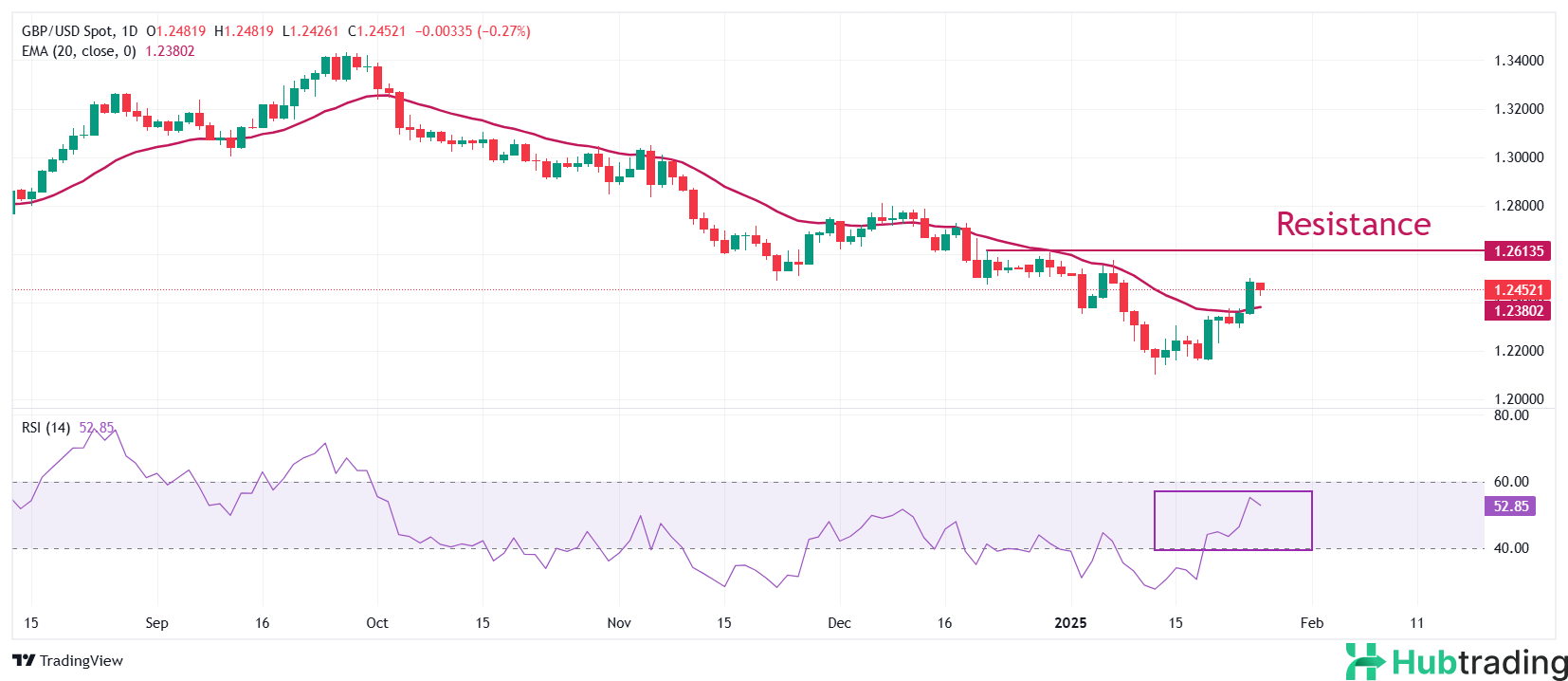- The Pound Sterling advances against major peers despite growing stagflation risks in the UK.
- UK gilt yields decline amid solid expectations of a dovish Bank of England.
- The US Dollar risk premium eases as markets absorb Trump’s tariff concerns.
The Pound Sterling (GBP) recovers its intraday losses and climbs above 1.2500 against the US Dollar (USD) during Monday’s North American session. The GBP/USD pair rebounds as the US Dollar weakens after markets absorbed concerns about potential U.S. tariffs on Colombia.
Over the weekend, U.S. President Donald Trump threatened to impose 25% tariffs on Colombia for not allowing military flights carrying deported immigrants to land on its territory. However, the proposed tariffs were suspended after Colombia agreed to Trump’s terms.
The US Dollar Index (DXY), which measures the Greenback against six major currencies, retreated to 107.50 after peaking at 107.80 earlier in the session. Investors reassessed the situation, viewing Trump’s tariff threats as more of a negotiating tactic than an immediate policy shift.
“This aligns with the growing perception that Trump may be underdelivering on protectionist policies compared to pre-inauguration rhetoric, with tariff threats unlikely to materialize as long as trade concessions are made,” noted ING analysts.
Looking ahead, the Federal Reserve’s (Fed) monetary policy decision on Wednesday will serve as the key driver for the US Dollar. The Fed is widely expected to keep interest rates steady in the range of 4.25%-4.50%. Markets will closely watch Fed Chair Jerome Powell’s press conference for signals on whether the central bank will consider Trump’s calls for immediate rate cuts.
Daily Digest Market Movers: Pound Sterling Gains Amid UK Stagflation Concerns
- The Pound Sterling strengthens against major peers despite mounting fears of stagflation in the United Kingdom (UK). Friday’s S&P Global UK PMI report for January highlighted a fourth consecutive drop in employment and accelerating cost pressures in the private sector, as producers pass rising input costs onto consumers.
- The slowdown in labor demand is linked to Chancellor Rachel Reeves’ announcement of increased National Insurance (NI) contributions for employers.
- Early 2025 business indicators reveal a challenging economic outlook, with companies cutting jobs amid declining sales and uncertain prospects. “Inflationary pressures have re-emerged, creating a stagflationary environment,” noted Chris Williamson, Chief Business Economist at S&P Global Market Intelligence.
- Rising price pressures and a deteriorating labor market add complications for the Bank of England (BoE), which is set to announce its first monetary policy decision of 2025 on February 6. Markets widely anticipate a 25-basis-point rate cut to 4.5%.
- Expectations of a dovish BoE stance have driven UK 30-year gilt yields lower, dropping over 1% to near 5.15% on Monday.
Technical Analysis: Pound Sterling Holds Firm Above 20-Day EMA

The Pound Sterling tests the psychological resistance of 1.2500 against the US Dollar, supported by a steady near-term outlook as the GBP/USD pair remains above the 20-day Exponential Moving Average (EMA) at 1.2380.
The 14-day Relative Strength Index (RSI) has climbed above 50.00, moving out of the bearish 20.00-40.00 range, indicating a pause in bearish momentum.
On the downside, key support levels are identified at the January 13 low of 1.2100 and the October 2023 low of 1.2050. Conversely, resistance is seen at the December 30 high of 1.2607, marking a potential upside target.





